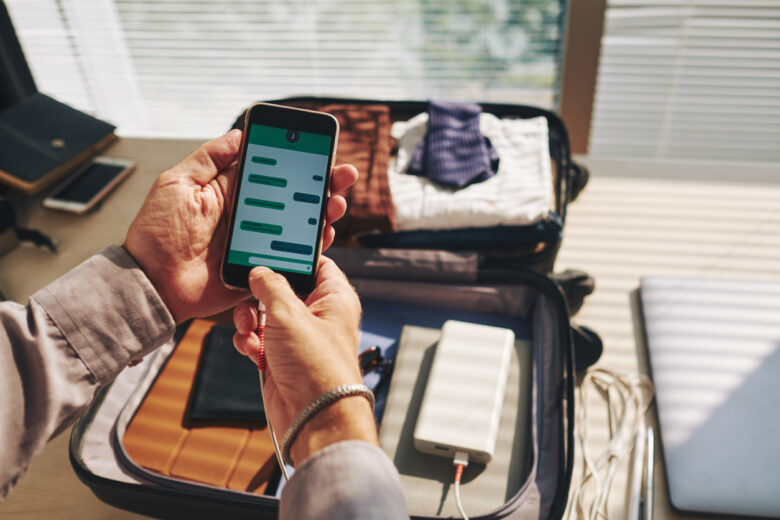Each time you leave the country on a family vacation or a cruise, your next cell phone bill has the potential to be gargantuan because roaming deals offered by US wireless carriers are anything but straightforward. Roaming fees are an important source of revenue for telecom giants, so Americans pay some of the highest bills in the world, even if the federal government has pressured providers to bring prices down. For every call you make, text you send, or bit you download, you have to dig deep into your pocket.
If you’re worried about roaming charges, here are a few tips to get the most out of your cellular connection when traveling overseas. Please continue reading to find out how to get better value for the same money.
Contents
Think Carefully About Your International Options

Source: orbitz.com
Maybe you want to disconnect entirely, which is a fantastic way to spend a trip. You can avoid the constant flux of notifications, messages, and information overload. If you don’t want to disconnect from constant connectivity, use an eSIM to eliminate the hassle of popping a local SIM card in and out on your flight. In case you’re wondering what is eSIM, it’s a SIM card that’s embedded directly into the phone. You can switch between different carriers and data plans, and this gives you more flexibility in terms of costs. You should be able to use LTE data without incurring astronomical fees.
The last thing you want is to get into an enormous queue to get a prepaid SIM card just after you’ve landed in the USA for example, or another destination. You can skip the line: plans range from a few days to as long as a year. With so many providers offering eSIMs, it’s hard, if not impossible, to make up your mind. If your current network operator doesn’t offer a cost-effective roaming service, take into account a travel-specific SIM. Should your device get lost or stolen, the eSIM card makes it easier to track the phone since it can’t be removed from the device.
Turn Off Roaming
Depending on the country you’re heading to, you may have to pay more to make calls, send text messages, and use mobile data. Before you get on the plane, turn off roaming and cellular data to prevent your device from connecting to towers along the way, leading to costly charges from your carrier. Your phone is highly customizable, meaning that you have complete control over basic features like data usage. You’ll still be able to use Wi-Fi. Roaming may come in handy, but it almost always involves a surcharge.
Communicate Primarily Via SMS

Source: cookiesandclogs.com
Sending a text message is considerably cheaper than calling, so if you don’t have the time for a chat over the phone, an SMS is quick and unintrusive. The recipient will check the message when they have a couple of moments to spare. You can count on SMS to keep in touch with family, friends, and co-workers while abroad. You’ll be surprised at how much you can communicate. Texting doesn’t necessarily require a response, so it’s perfect if you have to make an announcement or want to reach a large number of people at the same time. Unfortunately, text messages aren’t end-to-end encrypted, so they can be hacked, but they’re more discreet than phone calls, which can be overheard.
Use Wi-Fi Whenever You Can
Turning off data roaming means that your phone won’t attempt to get data from a network that’s not part of your native carrier, so you won’t be able to update your maps or access WhatsApp. The good news is that you can still receive phone calls and texts if you’re logged into a Wi-Fi network. Hotels, restaurants, and coffee shops have some kind of Internet access as part of their service; Wi-Fi is faster than mobile data in many cases. You’ll find your stay more pleasant. Not only will you be able to save a lot of money on data charges, but you can also carry out your Internet-related tasks at a decent speed.
It’s possible that a network has been set up by a scammer, so make sure it’s legitimate. If the name is too vague or is something like “Free Airport Wi-Fi,” it’s most likely set up by people looking to break into your phone. Upon checking into a hotel, for instance, ask a person behind the counter for Wi-Fi information so that you know what to look for the next time you go online. If the Wi-Fi network requires you to install something before you can use it, don’t give it permission to use your data or install software on your device.
Disable Non-Essential Apps
Of all of the apps on your phone, how many do you actually use on a regular basis? Chances are that you keep a fair number of unnecessary apps installed on your device that connect to the Internet to update, refresh, and download cell data. The fewer apps you have turned on, the less risk of amassing hundreds of dollars in roaming expenses. You won’t be able to completely remove an app due to the way the manufacturer has integrated it into the operating system, but you can prevent the app from running and using vital resources.
Staying Connected on Your Travels

Source: jal.co.jp
When you’re on the go, staying connected is a must, especially if it’s during the work week. If you want to take advantage of more affordable international data, make sure your phone is eSIM compatible. This ground-breaking technology allows you to use your phone with other carriers without needing to replace your SIM card. All you have to do is download the profile (i.e., the account information) from the network onto your mobile device. You can retain your phone number for regular communication, so it won’t become confusing for the people you try to contact. Taking advantage of eSIM technology requires some prep work, though.
We hope the solutions discussed above will put you back in control. Don’t forget to switch off automatic updates for the duration of your trip – it might seem trivial, but it will cut down your bill.
